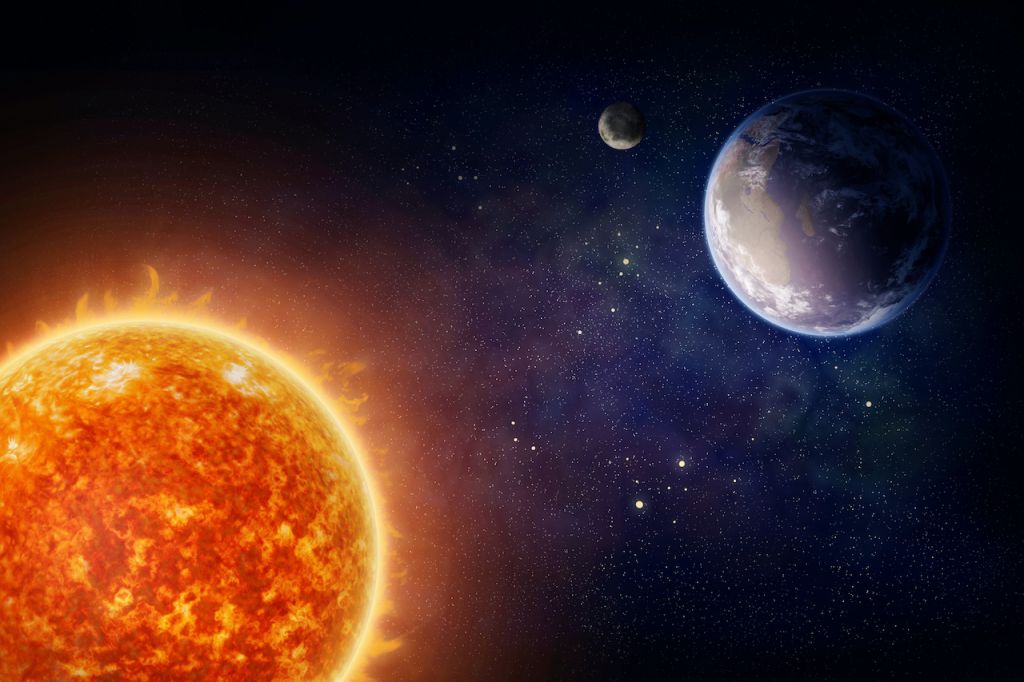How Many Earths Can Fit in the Sun?
The Sun is the largest object in our solar system. Other planets and satellites are smaller and fit in the Sun to varying degrees. Our neighboring planet Mars can fit in the Sun’s disk. Jupiter would have to be 1,000 planets wide, and Mercury would have to multiply itself 23.2 million times to fit in the Sun.
Radiative zone
The Radiative Zone of the Sun is a thick layer of gas that is in the core of the Sun. This region contains huge amounts of energy, including heat. Heat is necessary for plants and animals to grow, and without this heat, Earth would freeze. The radiation from the Sun travels from the core to the surface through two different zones: the radiative zone and the convection zone. During this process, hot gases rise and cool gases sink.
This zone is made of highly ionized gas, mainly hydrogen and helium. Its density is sufficiently high to slow down the speed of light. Its temperature is approximately 10,000 degrees F. Light is absorbed by the gas and is later emitted as a lower-energy photon. This process takes millions of years, so the light from the Sun can travel a long way in the solar system.
Convective zone
The convection zone of the sun is the final 30 percent of the Sun’s radius, where energy from its super-heated interior is carried outwards by rising and falling currents of gas. It’s the same process that makes glitter appear in a saucepan of boiling water. It transports photons, or light, faster than radiative transfer, which explains why it takes 100,000 to 200,000 years for photons to reach the surface.
The solar system formed from a huge cloud of gas and dust, and some of this dust remains in the dust rings tracing the orbits of the planets. The size of the solar system means that it can hold many earths, as the Sun’s orbit is only about half a million miles across.
Surface temperature
The sun is the largest object in our solar system and makes up 99.8% of its mass. It has a radius of 700,000 kilometers, more than 109 times larger than Earth’s radius. Therefore, it should be no surprise that about 960,000 Earths can fit inside the sun. However, the answer is more complicated than that.
If the sun were a hollow cube, the number of Earths that would fit in it would be 1.3 million. This would require an average size of 1.412 x 1018 km3, which would mean that 30 Earth-sized planets could fit between the Earth and the Moon. However, the Hayashi limit is eight billion times larger than the Sun’s volume.
Size of solar system
The size of our solar system is immense. The Sun is the biggest entity in our solar system. However, other planets and satellites can fit within its radius in varying degrees. Mars, for example, is close by. Jupiter would need to have at least 1,000 planets in order to fit inside the Sun. Mercury, meanwhile, would have to multiply itself by 23.2 million to fit into the Sun.
The size of the solar system is a great topic for a science project. For example, you could draw a diagram of the solar system to show the relative sizes of the planets and the Sun. You can also draw the planets to scale to get an idea of their relative sizes. As you can see, Jupiter is the largest planet and Saturn is the second largest planet. The size of the Sun is about 109 times bigger than the diameter of the Earth.
Number of planets orbiting the sun
The sun is a star and there are eight planets in our solar system. They orbit the sun around 93 million miles away. In order to travel that distance, the light from the Sun travels eight minutes. That’s about how fast Usain Bolt would have to run to reach Earth. Planets travel in elliptical orbits, which means the sun is not at the center of their orbits.
Scientists think that there could be another planet beyond Pluto’s orbit. This hypothetical object may have been caught in the gravitational field of the Sun. It’s possible that it’s a cool brown dwarf star or another planet. But the theory is still not firmly established. Other factors can prevent a planet from being classified as a planet, including eccentricity or crossing orbits with other planets.
